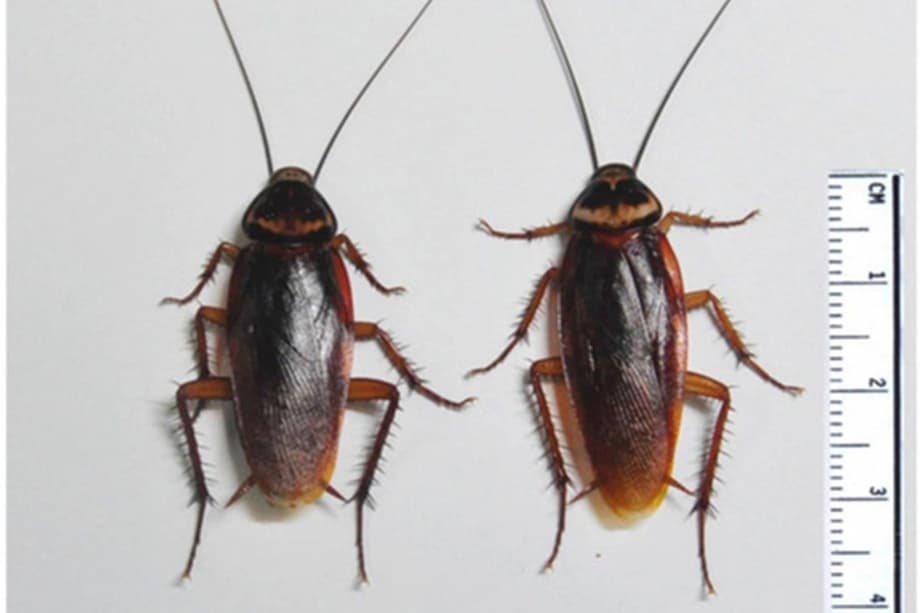A fast growing pest problem hits Japan’s dining rooms
A bowl of ramen in Kyoto became a flashpoint for a growing kitchen problem. A customer found a dead cockroach, which prompted Tenchi Foods, owner of the Tenkaippin ramen chain, to suspend two Kyoto outlets and order inspections across its network. The case did more than force a cleanup. It pushed into the open a trend pest managers have been warning about, the advance of the American cockroach across Japan. The species, long established in Okinawa and the southern islands, is now turning up with greater frequency in major cities and even in cooler regions. Businesses and diners are anxious because this roach is resilient, larger than common domestic species, and increasingly resistant to the products that once kept it in check.
- A fast growing pest problem hits Japan’s dining rooms
- What makes the American cockroach hard to eliminate
- Inside the Kyoto ramen case
- High profile closures show the stakes for brands
- Why this matters for public health
- How restaurants can get ahead of the problem
- What diners can do without overreacting
- At a Glance
American cockroaches, known scientifically as Periplaneta americana, are glossy reddish brown and often show a pale band near the head shield. They can grow to more than 4 centimeters. They favor warm, damp voids such as floor drains, basements, service shafts and sewer lines, then enter kitchens in search of food and water. Their mobility, long lifespan and high reproductive rate make infestations harder to contain. Pest control firms say the species is more stubborn than the small German cockroach that many Tokyo restaurants have learned to manage.
Masaya Adachi, president of 808 City, a Tokyo extermination company, has seen a clear shift in the field. He describes American cockroaches as solitary insects that reproduce quickly, so single sightings can soon multiply and give the impression of swarms. That dynamic, he said, is rattling operators already under pressure to hold down costs while keeping dining rooms spotless. For Tenchi Foods, the episode triggered emergency treatment, a review of pest logs and closer oversight of stores. Kyoto health officials reported no major hygiene breaches at the outlet, but they flagged gaps in the timeliness of pest control record keeping. Public criticism focused on the ten day delay before the chain acknowledged the incident.
What makes the American cockroach hard to eliminate
Unlike German cockroaches, which cluster in hidden harborages near stoves and dishwashers, American cockroaches spread through a building’s vertical spaces. They are strong runners, can glide short distances, and will feed on almost anything, from grease and crumbs to cardboard and soap. They tolerate a wider range of environments than many domestic species. When they move through sewers and utility tunnels they pick up grime and microbes, then track them into kitchens on legs and body surfaces. Nymphs mature in several months, then females drop egg cases that each carry multiple offspring, so populations can surge during warm months.
Traditional spray treatments are less effective against this species. Sprays rarely reach deep voids where roaches nest. Some populations show reduced sensitivity to common active ingredients after repeated exposure. Baits still work when applied correctly, but get less traction if sanitation is poor or if competing food is available. Heat, vacuuming and insect growth regulators can reduce populations, yet they only hold if building repairs and strict cleaning remove the conditions that attract the insects.
An insect resistant to common tactics
Pest control guides emphasize integrated pest management, a model that fixes the environment first, then adds targeted products if needed. As one industry advisory puts it, the goal is to protect food safety and avoid disruptive closures.
Rentokil, a global pest management firm, explains the stakes plainly:
“Cockroaches spread harmful pathogens, contaminate food, and can lead to fines or closure.”
That warning is playing out in restaurants that rely on stable reputations. A single video of an insect on a bowl can undo years of brand building. Kitchens that invest in inspection, exclusion and record keeping tend to recover faster because they can show customers and regulators what they did, when they did it, and what comes next.
Inside the Kyoto ramen case
According to the company’s account, the store manager brought in a professional exterminator soon after the ramen incident. City health officials were informed three days later. Inspectors did not find widespread hygiene failures, but they noted that records of pest measures were not kept in a timely way. Tenchi Foods suspended operations at two Tenkaippin outlets in Kyoto and said it would conduct inspections across Japan. The chain faced a wave of criticism for waiting ten days to brief the public.
Cases like this highlight a hard truth for the trade. Even clean kitchens can experience pest incursions, especially in dense urban neighborhoods with aging pipes, shared walls and service corridors. What separates a scare from a crisis is the speed and transparency of the response. Preventive logs, treatment maps and supplier checks are more than paperwork. They prove due diligence when public health officers arrive and when anxious customers ask for answers.
High profile closures show the stakes for brands
A larger chain recently took a more drastic step. Sukiya, one of Japan’s biggest beef bowl brands, temporarily closed most of its nearly two thousand outlets for deep cleaning and inspection after two separate pest incidents, including a rat discovered in miso soup at a regional branch in January and an insect found at a Tokyo store in late March. The company said it fixed a crack that had allowed a rodent into a refrigerator, committed to check buildings for gaps across its network, and set stricter rules such as refrigerating rubbish before collection. Stores were scheduled to shut between 31 March and 4 April to prevent external intrusion and internal infestation.
Those actions underline how a single failure can ripple through an entire franchise system. Share prices and sales can wobble, staff morale can slip, and landlords and suppliers ask tougher questions. Yet the broader lesson is constructive. Chains that move quickly, document their fixes and invite verification by local authorities tend to regain footing more quickly than those that minimize the problem or communicate late.
Pest linked closures are not unique to Japan. Health inspectors in Calgary ordered three food court restaurants to close in February 2025 after finding evidence of cockroaches. In California, county officials regularly shut venues until operators correct vermin, refrigeration or sanitation failures. Police in Madrid closed a restaurant after finding a cockroach infested kitchen and other severe violations. These events differ in severity and cause, but they confirm that rigorous inspection and risk control are now standard practice in many jurisdictions.
Why this matters for public health
Beyond brand damage, roaches create a direct risk to diners and staff. A peer reviewed study of cockroaches caught in food environments in Pudong, China, found genetic material from a range of intestinal pathogens in their digestive tracts. Detected organisms included viruses such as sapovirus, bacteria such as shiga toxin producing Escherichia coli, and parasites such as Blastocystis. Nymphs carried pathogens more often than adults in the sample set. Kitchens and catering sites showed higher trap counts than other locations in the study.
The researchers stressed that these insects act as mechanical carriers of disease agents between dirty spaces and food contact areas.
“Cockroaches are recognized as mechanical transmitters of infectious diseases, posing threats to human health.”
The study does not claim that every roach equals a foodborne illness, yet it points to a clear chain of risk. Roaches that traverse drains, dumpsters and floors can pick up pathogens, then spread them to prep surfaces and stored food if sanitation and exclusion are weak. That is why guidance for restaurants focuses on eliminating food, moisture and harborage first, then using traps and baits in targeted ways and keeping meticulous records of what was done.
How restaurants can get ahead of the problem
Integrated pest management (IPM) is the standard playbook. In kitchens facing American cockroaches, it means tightening the building envelope, drying problem zones, removing food residues, and then applying the least amount of chemistry that will do the job. Routine monitoring and documentation close the loop. The aim is to break the cycle that lets a few insects become a population surge.
- Verify species and map activity with sticky traps and night inspections. Adjust tactics to the species found.
- Raise sanitation standards. Seal food in containers, remove grease films daily, clean under and behind equipment, wash and dry floors at close.
- Remove water sources. Fix leaks, insulate sweating pipes, drain and dry sinks, improve ventilation, and empty mop buckets.
- Exclude entry and movement. Seal cracks, install door sweeps, screen vents, fit drain covers, maintain trap primers in floor drains so sewer gases and insects do not rise into kitchens.
- Reduce clutter and protect supplies. Elevate goods, rotate stock, and inspect deliveries for signs of pests before items enter storage.
- Use targeted controls. Place gel baits in concealed zones, apply insect growth regulators in harborage areas, vacuum live insects and egg cases, and consider heat treatment for severe infestations. Avoid foggers and broad sprays that scatter insects and contaminate surfaces.
- Keep records and train staff. Log sightings, trap counts, and service visits. Teach employees how and when to report. Review logs during manager walk throughs.
- Partner with licensed professionals for complex sites. Multi unit buildings, shared walls, and sewer connected kitchens benefit from coordinated service schedules.
What diners can do without overreacting
Consumers play a role in a healthy system. A sighting can be unsettling, but it does not always mean a deep infestation. How a venue responds tells more about risk than a single incident.
- Scan for basic cleanliness. Clean floors, tidy waste stations, and covered bins signal good discipline.
- If you see a pest, notify staff calmly and ask for a manager. Give details such as time, location in the dining room, and what you observed.
- Keep receipts and, if needed, contact your local public health office through its hotline or website. Provide the facts without exaggeration.
- Check inspection grades or reports where available before choosing a place to eat.
- Avoid sharing unverified images on social media that could misidentify a harmless insect or misstate the location.
At a Glance
- American cockroaches, once mostly in Okinawa and southern Japan, are being reported more often in major cities.
- A dead cockroach in a Kyoto ramen bowl prompted Tenchi Foods to suspend two outlets and inspect the Tenkaippin chain. Inspectors found no major hygiene failures but cited late pest control records.
- Pest managers say the species breeds quickly, hides in deep voids, and is harder to eliminate than common domestic roaches.
- Sukiya temporarily closed most of its stores for deep cleaning and building checks after separate pest incidents, showing how a single lapse can trigger chainwide action.
- Studies show cockroaches can carry viruses, bacteria and parasites from dirty areas into food spaces, stressing the need for strict sanitation and exclusion.
- Integrated pest management, not heavy spraying, is the most reliable way to prevent and control infestations in restaurants.
- Consumers can help by reporting sightings calmly, checking official inspection information, and judging venues by the quality of their response.
- Strong record keeping and transparent communication help businesses recover trust after incidents.




